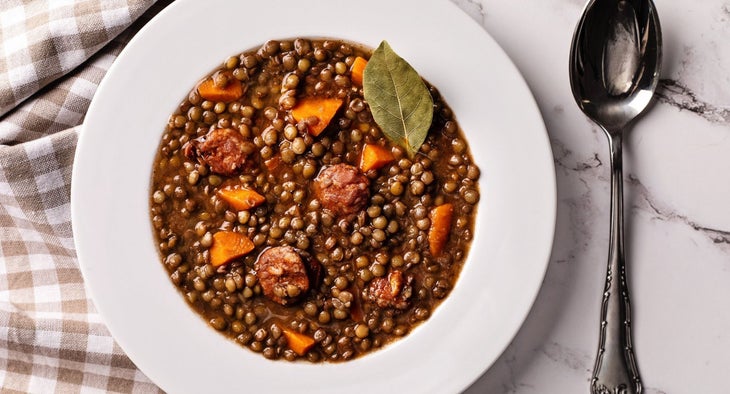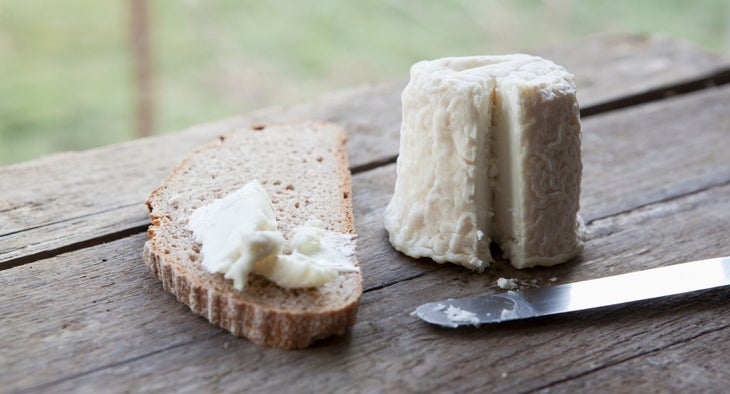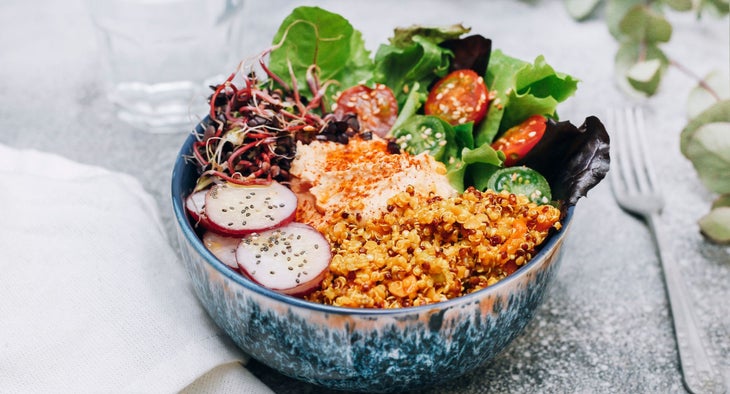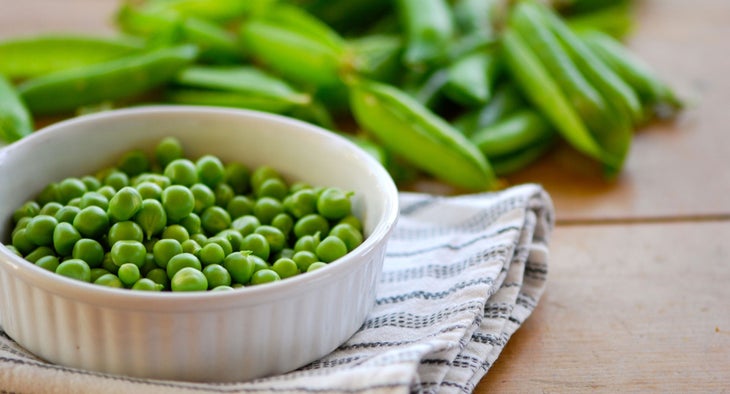Products You May Like
Protein is one of three macronutrients, alongside carbohydrates and fats, that is incredibly important for your health. It’s involved in just about every single bodily function and is certainly a nutrient you should be trying to get your fair share of each day. The current Recommended Dietary Allowance for protein is 0.8 grams per kilogram of bodyweight, no matter a person’s age, per The National Academies of Sciences, Engineering and Medicine. That translates to about 56 grams per day for the average man and 46 grams per day for the average woman.
Luckily, protein deficiencies in the United States are uncommon. However, certain groups of people are more vulnerable to running low than others. For example, individuals following a vegetarian or vegan diet might be running lower on protein than their meat-eating counterparts. If you’re not getting enough protein, you might experience a slew of unpleasant symptoms, such as leg swelling, flaky skin, slow wound healing and even a poor immune response, according to functional nutritional therapy practitioner Tansy Rodgers, FNTP. “Your protein may also be low if you find yourself dealing with brittle hair and nails and hair loss, as protein helps boost your levels of keratin in the body, which are essential for creating strong nails and hair,” she says. “These issues are not just because of a protein deficiency, however. If you are dealing with a few of them, it could be because of a protein deficiency.”
RELATED: This High-Protein Baked Oatmeal is Your New Go-To Breakfast
If you’re not a meat eater or are not too keen on certain foods that you know are high in protein, you may feel at a loss for options to maintain adequate levels of this macronutrient. However, there are more protein-rich foods out there than you realize. Here, nutrition experts share some of the unsuspecting foods that actually contain protein:

Lentils
This legume is popular among the vegetarian and vegan crowd for more reasons than it’s incredibly tasty. It’s also super high in protein. Just 1 cup of cooked lentils contains about 18 grams of protein as well as a handful of micronutrients, including vitamins C and D, iron, potassium and phosphorus. They’re easy to add to salads, soups, or eat alone as a side.
Yogurt
If yogurt is already a staple in your diet, you’re probably getting your fair share of protein. Many good-quality Greek or Skyr yogurts contain up to 9 grams of protein per serving. If you don’t already eat a lot of yogurt, try adding it to smoothies and breakfast parfaits to fruit bowls and baked goods.

Goat cheese
You may not have realized that just an ounce of goat cheese contains about 7 grams of protein! That’s a ton in a tiny serving. What’s even more exciting is that even if you’re lactose intolerant, you may have a bad reaction to goat cheese the way you do other cheeses; goat’s milk contains less lactose than cow’s milk and may be easier on sensitive stomachs. We love adding goat cheese to a beet salad.
Avocado
This creamy, green fruit (yep, it’s a fruit) is chock-full of good-for-you omega-3 fatty acids that have been linked to boosting your memory to warding off anxiety and depression. What most people don’t realize, however, is that it is even higher in protein, offering up about 5 grams of protein per cup. “To eat avocado, you can slice it open and pull the pit out (the pit is actually edible and full of nutrients, too!) and then slice it and put it on salads, tacos and meats,” Rodgers says. “You can also scoop it out, mash it, sprinkle it with sea salt and pepper, and use it as a spread on your toast.”

Quinoa
Although this plant food resembles a grain and often gets categorized as a carbohydrate, it’s actually a whole-grain food source that is full of protein. One cup of cooked quinoa contains 8.1 grams of protein, which is 15 percent of your RDA. “Not only is quinoa considered a ‘complete’ protein, meaning that it has all the nine essential amino acids needed to keep the body healthy, but it is also high in fiber,” Rodgers says. “Cooked quinoa is an excellent substitute for any grain; you can use it as a substitute for rice, pasta, and couscous.”
RELATED: This Quinoa Salad Is Beautiful Recovery Food
Chia seeds
As the name suggests, chia seeds are seeds, and most seeds (in addition to nuts) are high in protein. Just 1 ounce of dry chia seeds provides 4.7 grams of protein, or 13 percent of your RDA. “Chia seeds are a great addition to smoothies, grain bowls and salads, but you can also make a chia seed pudding for a little bit of dessert,” Rodgers says. To get the most benefit of their nutrients, she suggests soaking them for about 20 minutes first.

Green peas
Because green peas are considered a vegetable, they’re often not recognized as a high-protein source. However, just 1 cup of cooked green peas contains 8.6 grams of protein (24 percent of your RDA). “The best part of green peas is that they are a ‘complete’ protein [similar to meat] and contain all nine essential amino acids necessary to have a healthy body,” Rodgers says. “You can throw them into a soup, toss them into a stir-fry, mix them in your mashed potatoes or even eat them by themselves.”
Guava
This tropical fruit is a forgotten protein source, Rodgers notes. However, 1 cup contains 4.2 grams of protein, along with a ton of vitamin C, potassium, and phosphorus to boot. “To prepare it, cut it in half and then cut in slices or chunks,” Rodgers says. “You can sprinkle them on a salad, eat them by themselves or toss them in your favorite grain bowl.” Don’t want to eat the rind? Simply scoop out the pink flesh on the inside and enjoy.
RELATED: Protein Isn’t Just for Your Muscles—It May Also Boost Your Microbiome
